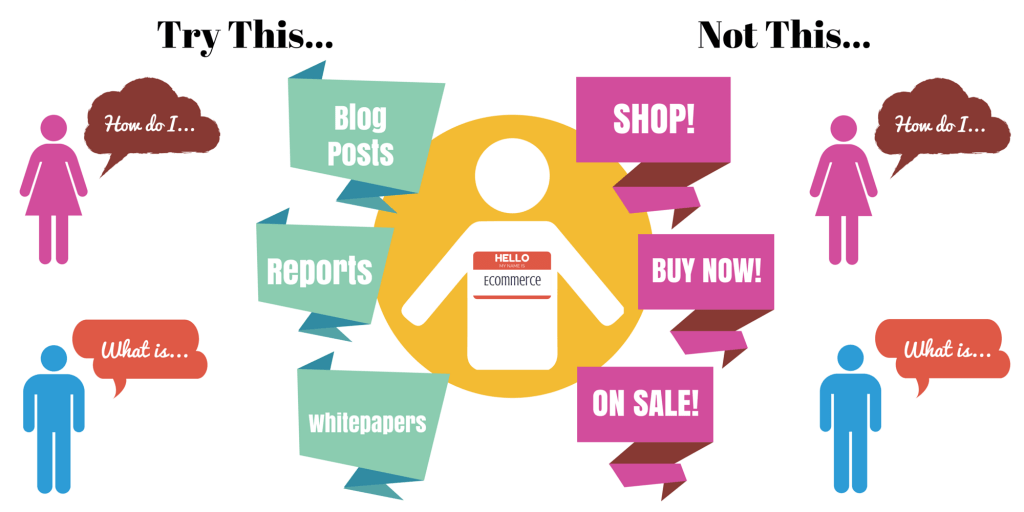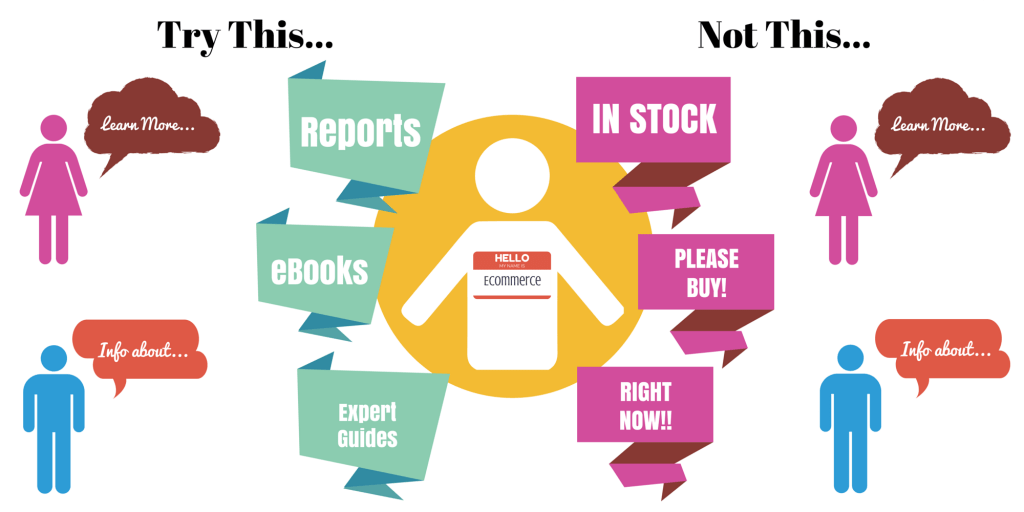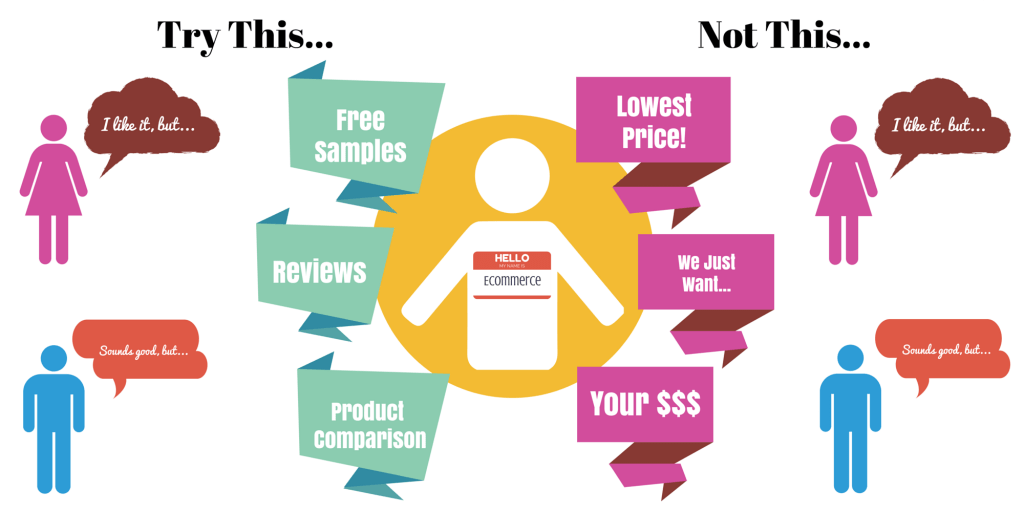In the world of E-commerce businesses, everything is about the sale. The platforms and tools you use, your marketing strategy, the design of your website, your checkout process – none of it matters if it isn’t contributing to the ultimate goal of boosting your revenue. While it remains the case that sales are the lifeblood of an E-commerce business, the connections we can make between a single tactic and an online sale are become less and less direct.
Today, potential customers can interact with your brand across of dozens of channels, through a variety of formats (text ads, display banners, social media posts, blogs, press releases, videos, webinars, how-to guides, etc.). Combine this with the fact that the average person shifts between their laptop, tablet, and smartphone up to 21 times an hour, and it becomes nearly impossible to tie every effort on every channel across every device back to your bottom line.
So what’s an E-commerce business to do? Considering that we’re exposed to an estimated 5,000 marketing messages per day, the most successful E-commerce shops are those making a concerted effort to cut through the noise and deliver real value to their potential customers. This means shifting away from outbound marketing techniques and incorporating the tenets of an inbound marketing strategy.
Below we’ll discuss some ways your E-commerce businesses can benefit from inbound marketing, and how to get it right.
Attract New Visitors by Addressing Their Problems, Not Yours
People buy products in order to solve problems. Depending on the types of products you sell, the “problem” can be more or less difficult to identify.
If you sell crutches, your potential customer’s problem is pretty straightforward: they’re having difficulty getting around. But what if you sell jewelry? Is the problem that they don’t have any jewelry at all? Maybe they don’t like the jewelry they already own? Or perhaps it’s something else altogether?
Regardless of the problems your potential customers are looking to solve, the key thing to remember is that you should be trying to solve their problems, not yours. There are several ways you can go about identifying your customer’s core problems and providing them with relevant, education-focused information – none of which involve the hard sell:
- Review data from Google Analytics, Webmaster Tools, Adwords, and any other platform that shows search term traffic. Which of those searches are tied to problems and pain points the searcher is looking to solve? Which are questions the searcher is looking to answer? How can you create resource to address those questions and solve those problems?
- Create surveys and questionnaires with the purpose of gathering insights into the wants and needs of your customers.
- Pay close attention to conversations that occur on social media among your target audience. Do they talk about their problems? Any mentions of things they like or don’t like about your brand or your competitors? If so, use that!
- You sales team is on the front lines of customer communication. Talk to them about recurring issues or complaints they receive. Is there a common issue that your sales team has to address? If so, does it make sense to create a resource to help answer that question for future customers?
Turn Visitors into Leads by Offering Up Solutions, Not Products
Once you’ve started getting a nice steady flow of traffic for people looking to solve a particular problem, you need to take things a step further and offer up some solutions. An important thing to keep in mind: at this stage, your products should not be marketed as solutions.
Again, resist the temptation to go with hard sales tactics here. Focus instead on providing additional resource to your visitors that are focused on solutions to their problems. This is a great opportunity to display your expertise through:
- Research reports
- Podcasts and webinars
- Expert guides
- eBooks
The goal at this stage is to expand on the educational information you created to address customer problems and pain points with relevant, actionable resources aimed at providing solutions.
Convert Leads into Sales with Product Value, Not Profit Margins
Eventually, everyone loses in a price war. It conditions customers to always seek the basement price and creates a perception of decreased value for your products and your industry. All of this is bad for business.
Instead of being the cheapest option, focus on why you’re the best option for a potential customer. To do this, you need to communicate your product’s value. Since you’ve laid the groundwork through educational and resourceful content, potential customers are in a much better frame of mind to hear about how your products are designed specifically to help solve their problems.
A few ways to communicate your product’s vale and convert leads into sales are:
- Free trial downloads
- Live product demos
- Free product samples
- Product and vendor comparison
- Cases studies and product reviews
Transform Customers into Advocates by Going Above and Beyond
What happens after someone purchases a product from your website? Do you continue to interact with them post-purchase? Do you send them follow-up surveys regarding their experience with your product? Are their any special offers or incentives you send their way?
What you do after someone has made a purchase is as important as getting them to buy in the first place. Why? Because happy customers become repeat customers, and repeat customers become advocates for your brand. They leave reviews of your products, tell their friends about you on social media, and recommend your brand to people looking for what you sell.
This is important, as 88% of consumers trust online reviews as much as personal recommendations.
Here are some tips to delighting your customers and turning them into brand advocates:
- Surveys and questionnaires
- Customized email marketing
- Special offers and referral discounts
- Upsell and cross-sell opportunities
Conclusion
Yes, the goal of any E-commerce business should be to sell products and increase revenue. But how you do that makes all the difference. Think about the buyer’s journey today – do the same old outbound marketing techniques still work when trying to sell your products online? If not, try to utilize inbound marketing for your E-commerce business. Remember, the focus of your efforts should be on providing real value to your potential customers.




Comments are closed.